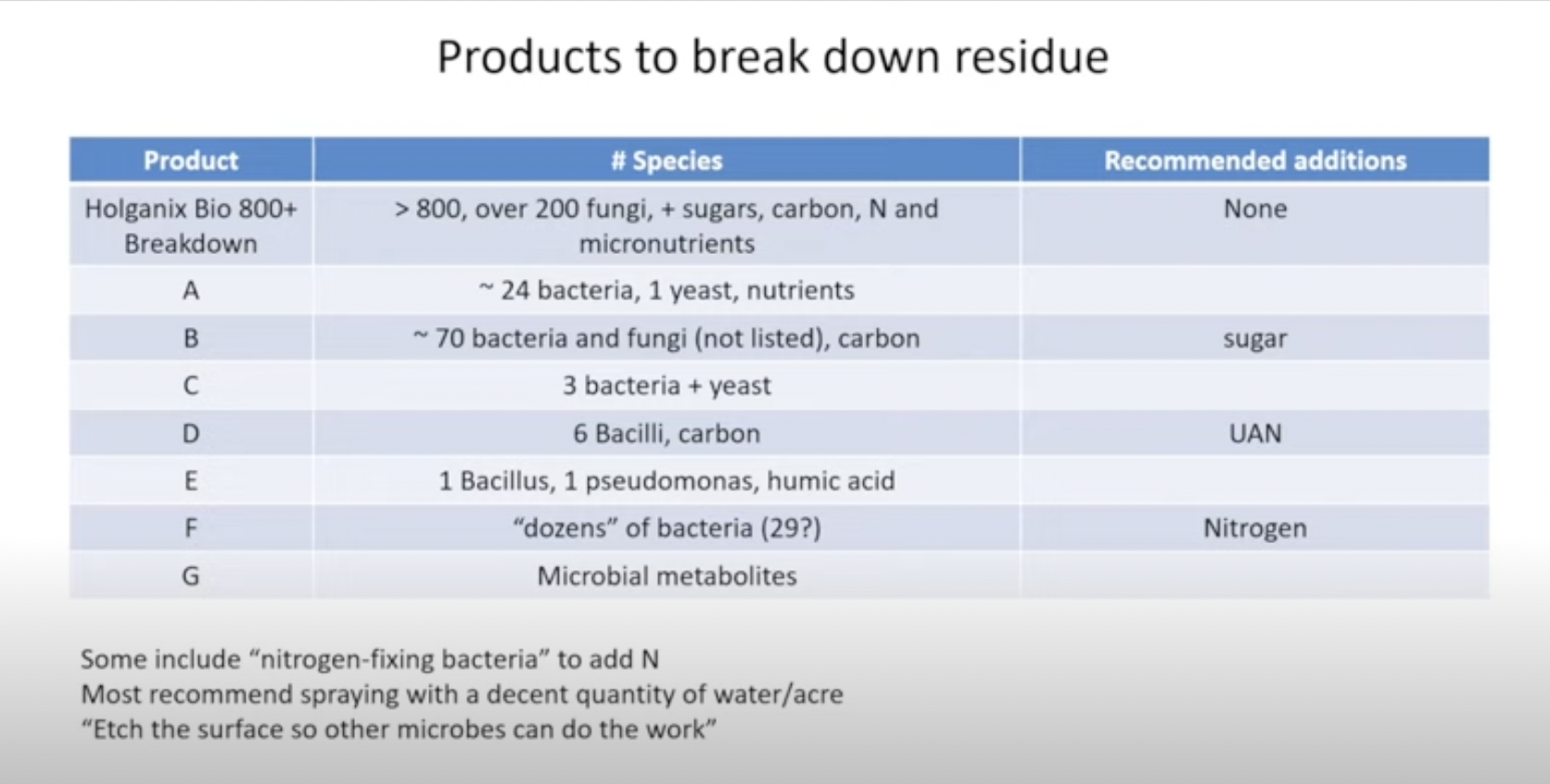Soil microbes play a crucial role in breaking down crop residue and building soil health in a no-till system. Dave Stark, Holganix president of agriculture, detailed how no-tillers can get the most out of the microorganisms in their soils during a recent No-Till Farmer webinar.
“Crop residue has a lot of value,” Stark says. “You can remove some or all of it as animal feed. But there’s also value in leaving some or all of it on the field. Minimizing erosion is one of the top benefits. Also, all that carbon is food for biology, which helps build soil health.”
WATCH: Dave Stark breaks down the types of soil microorganisms (bacteria, actinomycete, fungi, algae, protozoa, nematodes) and why they are all necessary to cycle nutrients and build soil health.
While crop residue is valuable, having too much or too little of it could cause problems, Stark says.
Erosion, surface crusting/decreased infiltration, decreased soil quality/organic matter and less moisture are all negatives caused by having too little crop residue.
On the other hand, too much residue can lead to cool wet soils, uneven emergence, tied up nutrients/nitrogen, jammed planter and other equipment and impaired soil-seed contact.
Stark says there are proven biological products on the market, like Holganix Bio 800+, that help break down crop residue and build soil health, but there are several products that overpromise and underdeliver, as laid out in the chart below. 
“Products A through G only contain bacteria, except product B," says Stark, who doesn't want to reveal the names of the specific products. "Product B could be interesting, but I can’t find a list of what fungi are in it. It could be a good product; I just wish I had more information on it.”
Stark recommends applying products like Holganix Bio 800+ after harvest, only if it's warm enough in your region.
"If you're harvesting after Thanksgiving, and winter is days away, then don't spend your money," Stark says. "I lived 36 years in St. Louis, Mo. Most winters we had enough sunny days with moisture, I'd consider using a product like this after Thanksgiving. But here in Fort Wayne, Ind., I would not, because winter comes, and it stays. It's too cold. Also if you're in a place where it's bone dry, and you're not even getting enough morning dew to wet the residue mat, you might want to wait until spring to apply these products. If there's no moisture and it's too cold, the microbes aren't going to do anything, they're just going to sit there."
Click here to watch Dave Stark's full presentation on the role soil microbes play in crop residue breakdown, and what no-tillers should consider when searching for products to boost their soil health.
Related Content
Reducing Fertilizer Costs Starts with Your Soil: Roundtable Discussion







Post a comment
Report Abusive Comment